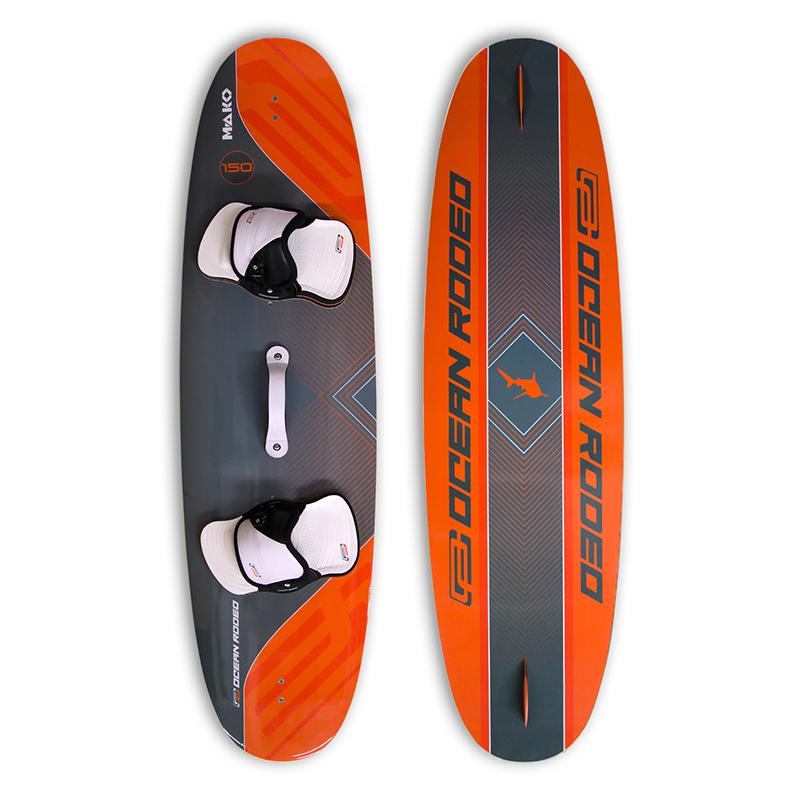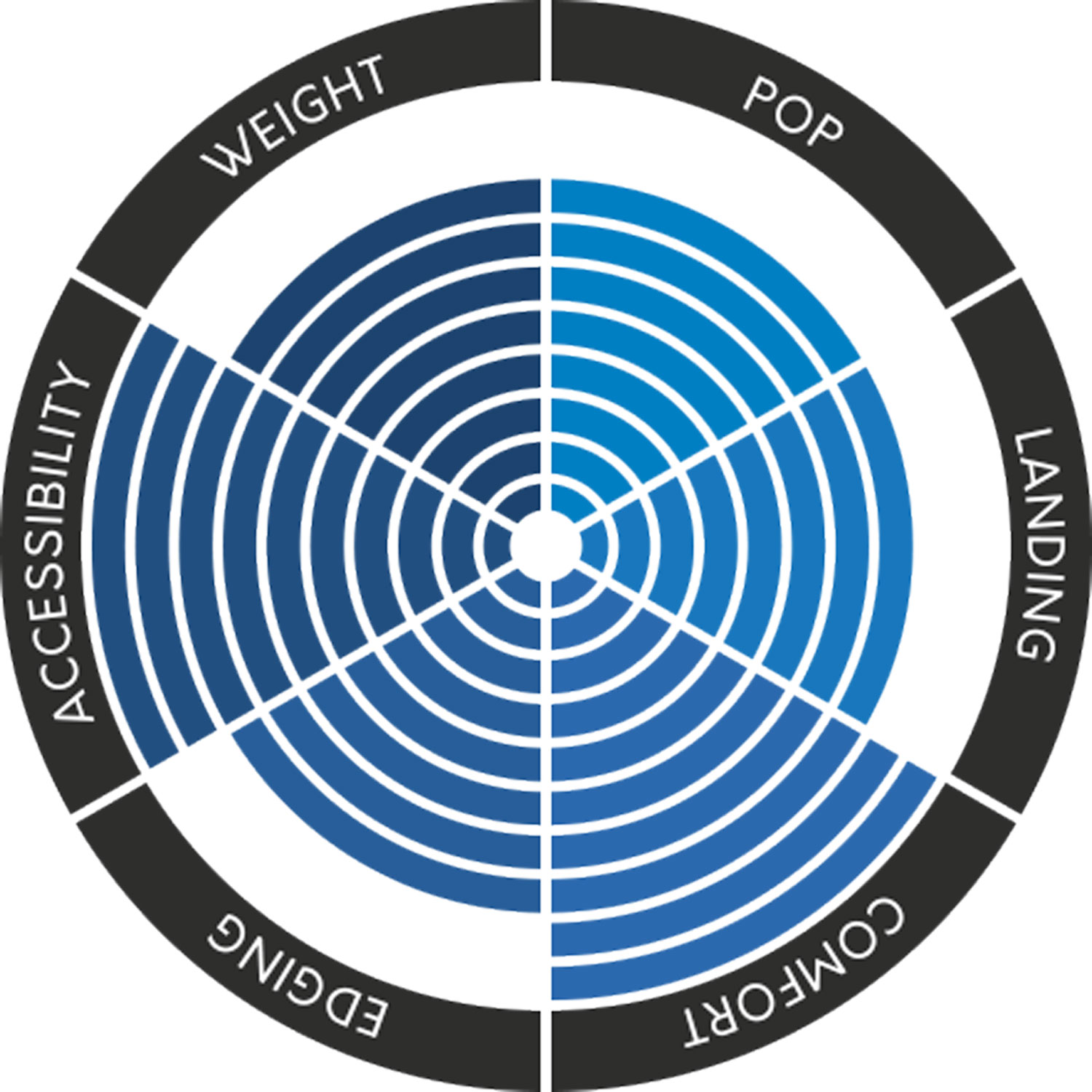When you purchase gear through links on our site, we may earn a small commission. Here’s why you can trust our tests and our affiliate partner.

The Mako has now been around for 15 years. It is aimed firmly at the freeride market, and has a committed cult following. To say the build is robust would be an understatement, and the pads and ratchet straps are pure opulence on the feet. Initially, coming from a more run-of-the-mill twintip, it takes some adjustment to your riding style to get the most out of the board. It has a silky smooth connection to the water and you get the feeling you are perpetually sliding along on an air hockey table. You have to learn at what point it grips, which it does quite progressively, and use that to your advantage. It also required a more even foot pressure than expected. It’s not the most straightforward board to ride, but is incredibly rewarding once you understand it.
The Mako relies entirely on its pringle shape to control vibration through chop, which it does well. Then that humongous concave makes even the choppiest water states comfortable and shows why it is such a popular board in northern Europe. The board is stiff throughout, even in the tips, and pushes all that water pressure into the deep concave. Combine that with a large rocker and weight, I found it required a generous dollop more power than you would expect of a similar sized twintip to really turn on the power. Again, the Mako is very different to load up than a traditional twintip: you can’t load the rail and store energy in the tip, so to get airborne you have to rely on being very generously powered and sheeting your kite for boost, this results in nice floaty jumps with lengthy downwind travel and silky soft touch downs with the concave sucking up the landings…
The 165cm can also be set up in mutant mode, with the pads and straps biased towards your preferred back foot and some extra fins. This lets you get more body weight over the back of the board and carve with a more convincing surfboard-like turn. The fin setup provides quite a skatey feel in comparison to a dedicated surf board and riding it backwards for a chicken jibe situation is super easy. So it is ideal for those without the time or impetus to learn to ride a surf board, and it does an admirable job of slicing a decent top turn. If you want one board for mixed conditions, like riding in straps and gentle jumps, it could be for you. We found, particularly in the smaller sizes, the Mako really shone when matched up with a big flat fast flying kite with easy sheet and boost potential. And it is the undisputed master of fast carving, giving more rooster tail than an 80’s mono ski.
In a sentence: The Mako is a board that’s perhaps not for everyone, but certainly has its place among more casual free riders who want an easy ride on their knees and the ability to slash a wave or two if required, and who want to take off and land from their jumps exceptionally gently – our advice: try one…
